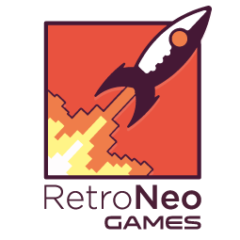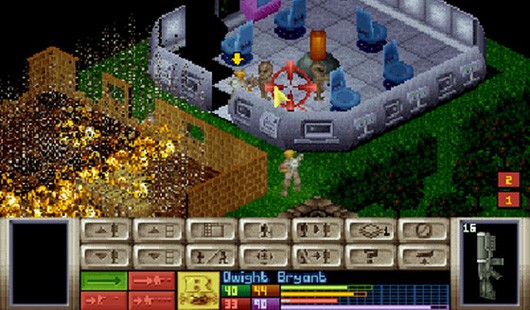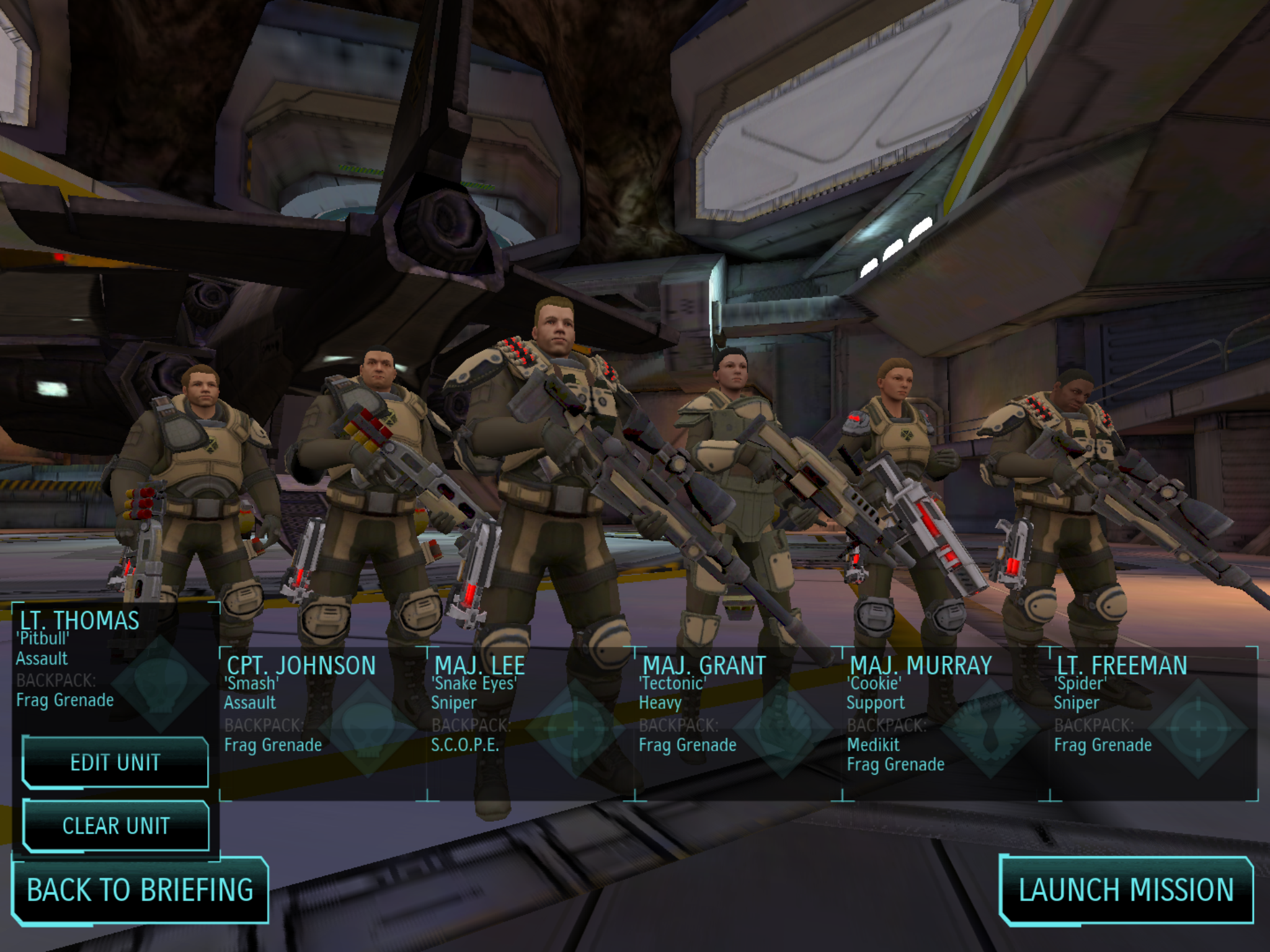
Hi! This is Part 3 of me offering some insight into the development of my game, Sons of Sol: Crow’s Nest.
In Part 1 I explained my pitch “Asteroids meets Total War”.
In Part 2 I talked about the games that are influencing the design of Crow’s Nest.
In Part 3 I discussed a design challenge that the game faces.
Now we’ve reached the final post of this ‘Making Crow’s Nest’ series. You may recall from Part 1 that these four posts were written together and scheduled to post while I was on some down time. Next week I’ll be back to blogging on more mainstream game topics.
Today I’m talking about what Sons of Sol and Crow’s Nest actually are. This will be a more autobiographical post than normal, so you have been warned. This tale will interweave a little bit with my previous blog on how I got into game development, which I was uneasy about writing but which people seemed to respond very positively to. This won’t be as much of downer, though, promise!
Together, “Sons of Sol” and “Crow’s Nest” are the working title for the game that I’m working on, which is my (and RetroNeo Games’) first game ever. Hopefully there’ll be no need to change those names, but these things happen sometimes in development. Better names come along or products with similar names get released before yours.
An Evil Empire
Sons of Sol actually began in 2012 not long after Disney bought Star Wars from George Lucas. I was a life-long Star Wars fan. The films, games, and especially the books. My brother bought me one of the Expanded Universe (EU) novels in 1997 for my 10th birthday; a Han Solo trilogy one. From then and for the next 15 years, 4 out of every 5 books that I read were probably Star Wars books. I loved how the stories interconnected. I loved that a character could be introduced in one book, and survive fifteen fictional years, then be killed off when you least expect it.
There were a lot of bad books in the Expanded Universe, but far more good ones. I loved how you were rewarded for your time by seeing threads of stories affect each other decades apart. The rebels eventually take Coruscant, Han and Leia have three kids, these kids get dozens of their own books and become their own proper characters, grow to adulthood and war with each other, for example. There’s a book for more than every year of their lives. You can observe their whole character arcs from birth to… well.. if you put the time in. The EU was all internally consistent, and all canon. It all worked together.
There are a few early exceptions and a few game stories that don’t fit, but otherwise the EU really rewarded fans for their time. In 2012 I finished reading to the end of the Star Wars chronology. That’s 40 years of story after Return of the Jedi, not to mention the Clone Wars books and books set between and during the movies. I didn’t read all the books, but read most from the timeline of Episode 1-6 and beyond. None of the Old Republic stuff, though.
Anyway, I felt I’d achieved a monumental reading goal that I set myself in 2007 (before that I’d read the books a little randomly). Five years of reading little but Star Wars, and the stories I got out of it were great. No other franchise could achieve this (well, maybe Star Trek).
Then Disney bought Star Wars, and soon announced that there would be a new trilogy, but that they’d be throwing away all of that canon. The EU didn’t count any more. Timothy Zahn started with Heir To The Empire in 1994. 18 years of work and some great stories now didn’t count because Disney felt there was more money in movies and merchandise.
I’m not naive. I know there is. I know entertainment is a business, but I’m just trying to convey my disappointment at the news. They could have set new movies inside the EU, easily. Instead they threw it away for.. well, we don’t know yet. This blog is posting 1 month before the release of JJ Abrams’ Episode 7. We’ve no idea if the new movies will be good or if the stories will be better than the ones discarded. I’m still totally reserved at the time of writing this.
I also know that I now have two timelines. More Star Wars! Yay! Well, that’s just not how I feel about it. I’m allowed to feel disappointed, particularly after the loyalty I showed the franchise.
A Great Journey
Anyway, also around this time, I moved back to Ireland after unsuccessfully attempting to get a permanent visa in Australia. So I was back in Ireland and unemployed with no decent chances of starting a career any time soon. I decided to start writing science fiction to fill the Star-Wars-shaped hole in my soul (okay, I’m being overly dramatic. I’ll watch it. Sorry).
I was going to write a universe of my own that I would promise to keep consistent with itself. I didn’t believe that this would become a big thing, or even necessarily that I would get a single book published, but it occupied the time.
Building a Galaxy
I started watching tonnes of science fiction movies and documentaries and designing my universe. This took a long time. You have to design whole new physical rules for your world. You have to say “you can do this, but not this” and consider if that statement even makes sense. If you have one technology available, like artificial gravity without rotation, then you have to consider what else you can have. With that, for example, you’re kind of saying that the theory of ‘gravitons’ existing is correct, and that we’ve managed to develop technology to manipulate them. Well, keeping someone fixed to the deck in a spaceship (as seen in almost every sci fi movie and show ever) means that you can cause attraction towards a point. In that case, you can probably cause repulsion in the opposite direction. This would make hover technology a reality. Did I want hover cars and hover crates in my sci-fi? Because if not then I have to solve the artificial gravity problem in another way.
How long does it take to travel from one star system to another? That’s going to have a major impact on stories later on. Armies can’t reinforce one another in the middle of a battle if it takes two weeks to travel to the nearest star.
In the end, I came up with rules I was happy with. It’s a lot like Battlestar Galactica with some Mass Effect and Starship Troopers thrown in. A cold-hard-metal feel to things but with certain sci-fi tropes like artificial gravity. Warp speed is accomplished assuming that Alcubierre’s (real) theories are correct and realisable. There’s no light swords, weapons fire hard projectiles, and there are no shield technologies. Armour and photo-chromatic materials are all that you’ve got in battle. There’s also ABSOLUTELY NO TIME-TRAVEL OR ALTERNATE DIMENSIONS, EVER!!
Next I was writing broad story arcs and setting up so that the universe could grow wide, and so that you could have human factions appear in all parts of the galaxy. After all, it’s easier to dress the actors as humans than aliens. You’ve got to think forward! 😉 Look at Stargate!
I sketched out a 3 part story that told the tale of Earth’s first expansion beyond our solar system, our first contact with aliens, and our introduction to the wider galaxy. I designed alien races called the Cestral and the Skulaari, the latter being the villains, themed on terrifying sea creatures like giant squid and crustaceans. I even wrote a little language for these factions.
I Need a Name
This all took several months, and I got a job for a few months which led me to drop the writing project for a while. Then I lost the job and took the writing back up again. I started writing the real story, finally, and decided to call the story at large “Sons of Sol”, after conducting extensive web searches for similarly named things.
At the time, I found none. I bought the .com address and set up a wiki to lay some sort of claim to the name. I’ve since found some similarly named games, a Korean TV show called “Sons of Sol Pharmacy” and a hoody company with the very same name. Apparently, I’m still fine to be using the name, so for now I’ll keep it unless I can think of a name I like more.
In early 2013 I started studying tax in Ireland, believing this would be my route to eventual (permanent) employment. I worked hard at it, but I was unemployed and it was a part time course, so I still had some time to give to writing and designing the world. I also had been writing down game ideas as they came to me and designing them out in .txt files for fun. I never expected to make a game, though, as I didn’t want to study another degree course just to go into a risky profession.
A Flirtation with Games
One day I was very sick of studying this boring topic and posted on the forum Boards.ie to see if any game developers needed somebody with “great ideas” (I know, right?! haha) but who could also record audio, compose music, write, and manage the business/marketing side (okay, that’s a little better).
A guy called Rob Reinhardt in Dublin got back to me and he was actually interested in doing some collaborating. We struck up a friendship and met a few times, talking about games and what we might make together. I was only going to be involved part time as I was studying and hopefully going to get a normal job, but I’d help with the writing and other stuff as much as I could. I wasn’t looking for pay or anything.
Eventually, we decided to use Sons of Sol’s universe as a setting for a game. It would be a prequel for the book I was writing. The book focussed on the people of Earth (at first), but the game would focus on a lost human civilization called the Kolrir and how they came (secretly) to Earth, setting up the events of the book I was writing.
Nothing came of the game ultimately, but we’d designed a lot on paper for Sons of Sol: Exodus (that name would have to change if we’d done it because Sol: Exodus came out from somebody else).
An Earth-shattering Kaboom!
2014 rolled around. I got a job in tax.. for 6 weeks, then lost that one too. Rob and others had told me that Unity was easy to pick up and start using, so with game design now on the brain and no tax to work at or study, I started at Unity and learned how to do some basic programming through their tutorials. It was only a couple of months before I had a very early version of a space game up and running. I later returned to this very first game for Crow’s Nest.
I started going to gaming events in Dublin and meeting the great community here, as well as improving my own skills and looked into starting a company through the unemployment enterprise scheme.
The game that Rob and I had designed was still well beyond my skills still (probably his too. We weren’t good at ‘scope’) but the space game currently on my screen could work inside the Sons of Sol universe too. After all, I’d designed it very openly. I can plug in new civilizations wherever I like and the story still all holds together. I’d put a lot of time into the ‘Exodus’ story (with Rob) and thought it was solid, so I wanted to keep it in tact. I decided to write a prequel to the prequel and tell the story of the characters that you would meet in Exodus and call it “Crow’s Nest”.
My very own Game
The game would be ostensibly about a private military company from Kolrir protecting their territories from pirates. The ‘Crows Nest’, the lookout spot on a sail ship (like a pirate boat) sounded suitably pirate-y for a name. In space, though, particularly in another non-Earth culture, the crow’s nest wouldn’t really be a term in use, both because you can’t sit outside a spaceship, and the Kolrir culture may never have had sailing ships as far as we know. So in this case, the “Nest” would refer to a pirate base hidden inside a large asteroid, and “Crow” would be the pirate villain in question who owned that base.
I’ll fully admit that I didn’t finish a book, didn’t finish a game, and am now starting another game, but bear in mind that I saw writing the book as just killing time while unemployed. The first game was killing time in between studying. With the current game, I’ve formed RetroNeo Games as a company. This is now my job, and that’s a hell of a difference. I also now have the skills to make a game (or at least prototype it) by myself, without just being in a position where I’m giving ideas to other people. I have the time, ability, and drive to deliver Sons of Sol: Crow’s Nest.
The Future of Sons of Sol
I plan to release in early 2017. This will then be the first Sons of Sol product to exist, almost five years after I first created the universe. I hope people will like it!
I could take the same game and abandon the Sons of Sol name. It’ll make no difference to the players. They don’t know what Sons of Sol is! But I’ve a whole universe worth of stories to tell and why shouldn’t I make the game a Sons of Sol title? It fits. It works. But what if it’s bad and I wreck the name before I even begin?
Well, then I released a bad game, I guess. That’s the risk with any creative work. And it’s still better than releasing no game at all and Sons of Sol never getting its chance in the public domain. But I’ve worked too hard for years for no reward to approach this half-assed. Sons of Sol: Crow’s Nest is going to be my absolute best effort, and nobody can ask fairer than that. I’ll be a very proud daddy the day I finally release the game. And who knows, maybe I’ll get to those other story lines some day, either through game sequels, or finishing the novel. The novel was only a couple of chapters in, though, when I last left it. If that were to be finished now I’d be better off having a different writer do it while I make a game. And I could only do that if a Sons of Sol game were wildly successful and there was the interest in a book.
That’s extremely unlikely, I know, but it doesn’t bother me either way. I feel that if I can release one Sons of Sol title at this stage, I’ll be happy and it will all have been worth the effort.
Is he done yet?!
If you read this far, well done, and thanks very sincerely for your interest! Especially if you read all 4 parts. Sorry for the lack of images today, also. I’ve really got no pictures of this topic, though. Next week we’re back to non-Crow’s Nest gaming topics for the blog.
Until next time..

















